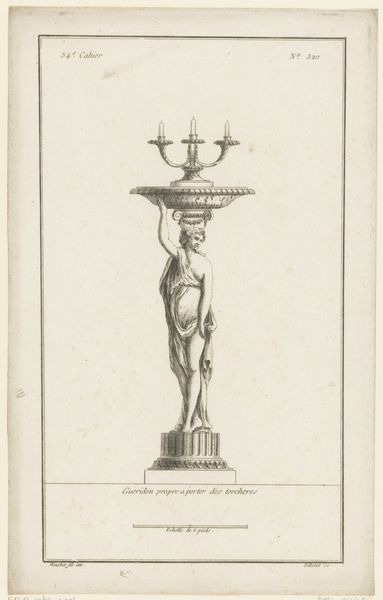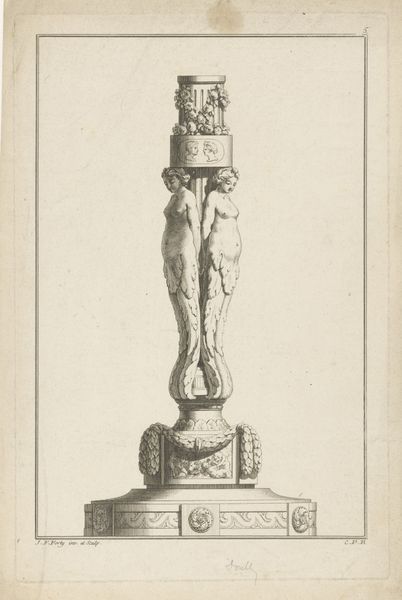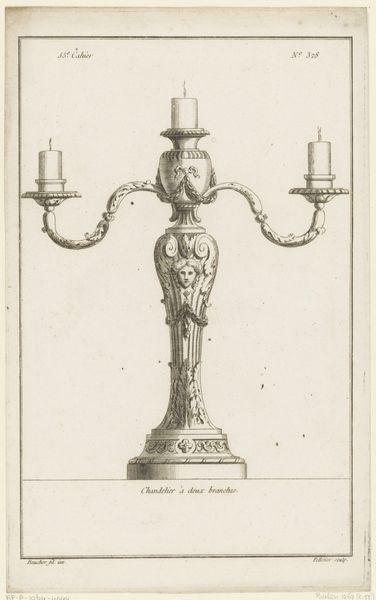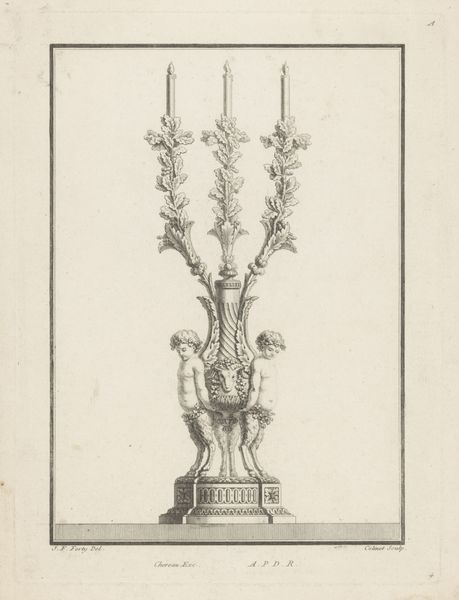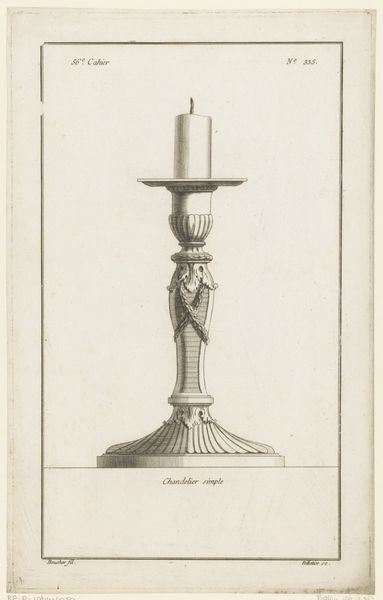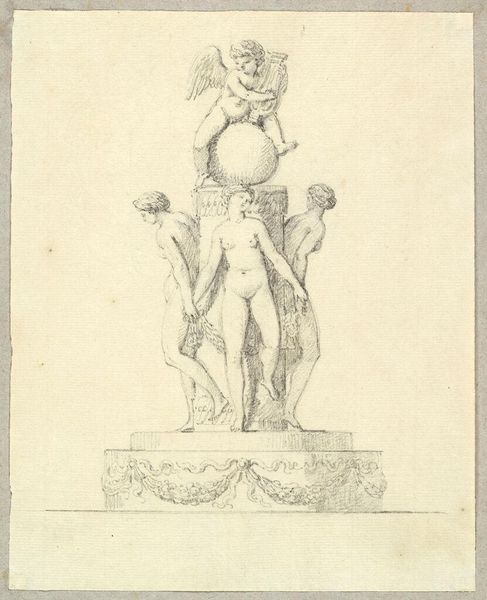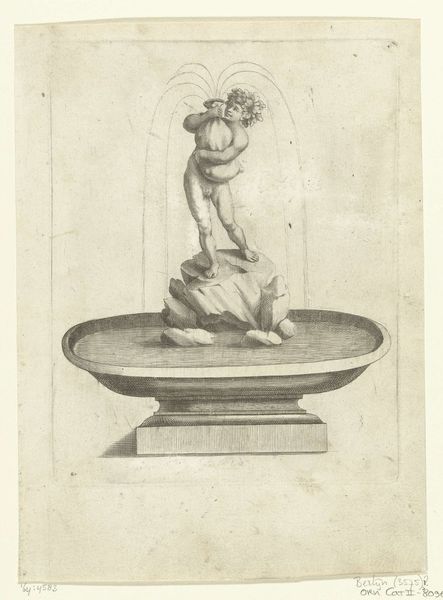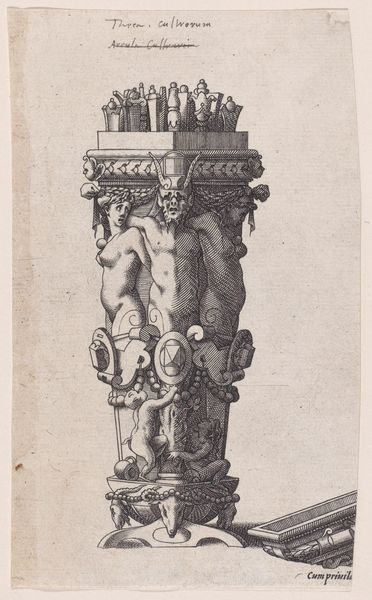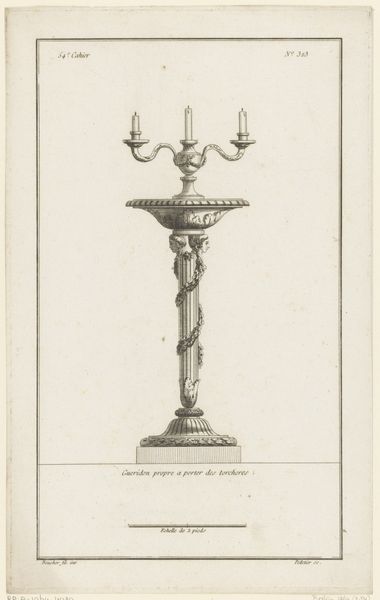
Dimensions: height 330 mm, width 205 mm
Copyright: Rijks Museum: Open Domain
Editor: So, here we have "Gueridon met twee halffiguren," a print made between 1772 and 1779 by Jean Pelletier. It's a very detailed engraving. The first thing that strikes me is the almost unbelievable ornamentation; what stands out to you about it? Curator: What grabs me immediately is the public display intended for designs like this. Consider the historical context: this piece bridges Baroque and Neoclassical styles. Its function as a potential torch stand speaks to the socio-political role of art during that era, especially decorative art like this. Who was this design intended for, and what message did its aesthetic convey? Editor: Right, the opulence of it suggests wealth and status. Was this meant for a domestic setting or something more…grand? Curator: The print would have circulated among craftsmen and patrons interested in the latest styles. Think about the emerging bourgeois class aspiring to aristocratic taste; designs like this became potent symbols of social climbing. Note the figures supporting the upper part. Does their nudity remind you of classical sculptures? This element, combined with Baroque flourishes, offered a modern take on power and elegance, and reflects aspirations and ideological messaging in late 18th century. Editor: So, it’s more than just a candlestick design, it’s a statement. Are there examples of furniture based on prints like this that we can point to in collections of decorative art? Curator: Precisely. Recognizing this print within a larger network of production and consumption helps us understand the values it promoted. Seeing how Pelletier, and the publisher behind him, contributed to the distribution of aesthetic taste among wider audiences tells us much about art's societal role in 18th century Europe. Editor: That puts it into a completely new perspective. It's fascinating to consider how seemingly simple designs reflect so much about the social and political climate of the time. Curator: Exactly! By analyzing the intended audience, the distribution networks, and the cultural values embedded in this piece, we gain valuable insights into the complex relationship between art, power, and society.
Comments
No comments
Be the first to comment and join the conversation on the ultimate creative platform.
